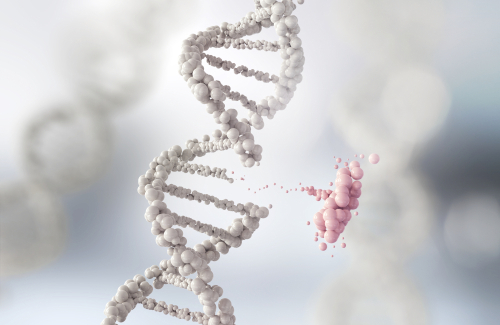Extra PMP22 Gene Results in Toxic Clumps Inside Cells That May Drive CMT1A, Study Says

The extra copy of the PMP22 gene that causes Charcot-Marie-Tooth disease type 1A (CMT1A) leads to a potentially toxic buildup of the PMP22 protein inside cells because the excess protein cannot be folded properly and is not transported to its rightful place in the cell membrane, according to a recent study.
This accumulation may contribute to the disorder and could explain the progressive nature of the disease.
The study, “Direct Relationship Between Increased Expression and Mistrafficking of the Charcot-Marie-Tooth-Associated Protein PMP22,” was published in the Journal of Biological Chemistry.
PMP22 encodes a protein that is normally transported to the cell surface. While the protein’s precise biological function remains unclear, studies have shown that it plays a role in the maintenance and development of myelin, the protective layer that coats nerve cells and helps them efficiently transmit nerve signals.
Damage to the myelin sheath, and the consequent slow transmission of nerve signals, underlies the muscle weakness and atrophy, and the reduced sensation experienced by those with CMT1A. Consequently, CMT1A is often referred to as “demyelinating CMT.”
Although the duplicated PMP22 gene is the condition’s defining genetic feature, why a third copy of the gene (there are normally two copies of most genes, one from each parent) leads to neurological disease remains poorly understood.
Researchers at the Vanderbilt University School of Medicine tested the hypothesis that extra PMP22 protein overwhelms the cell’s protein folding system, leading to the accumulation of toxic protein clumps, or aggregates.
Proteins undergo several processing steps before arriving at their final locations. A protein’s final shape determines its function. After being produced, the raw protein must be correctly folded inside a structure called the endoplasmic reticulum, or ER.
When too many unfolded proteins enter the ER at once, they can overwhelm the protein folding machinery, clog the ER, and not be transported to their appropriate location within the cell.
Since PMP22 normally functions at the plasma membrane, the Vanderbilt team first measured the rate at which cells trafficked PMP22 from the ER to the plasma membrane, to establish a baseline measurement.
They observed that as the amount of PMP22 inside the cell built up, the PMP22 protein that was transported to the plasma membrane remained constant. This suggested that the cell was failing to traffic the excess PMP22 that accumulated in the endoplasmic reticulum.
As more than two-thirds of CMT cases result from mutations in PMP22, the team examined the effects of several PMP22 mutations that lead to abnormal cell trafficking and demyelination, and either cause CMT or lead to CMT-like phenotypes (observable traits) in mouse models.
These mutant proteins could fold correctly and be transported to the plasma membrane at low concentrations, but the efficiency of this transport declined as their expression increased.
Although all the mutant PMP22 proteins accumulated to the same degree within the cells’ endoplasmic reticulum, they were transported to the plasma membrane at markedly different amounts.
This implies that greater complexities remain to be revealed, in fully understanding the process that leads from PMP22 accumulation to CMT1A progression. The study’s investigators note, for instance, that different mutations in PMP22 cause varying CMT severity.
They also note that even normal PMP22 is only marginally stable in its fully folded state. This could help explain its relatively low efficiency of intracellular trafficking and the ease with which an increase in PMP22 concentration can lead to toxic accumulations within the cell.
Although the cell has systems in place to remove misfolded proteins, these systems can fail when they become oversaturated.
The findings support the theory that the accumulation of misfolded PMP22 drives CMT1A occurrence. Because this study took place in cells grown outside the body, however, the investigators suggest that follow-up studies should be done to test these results in cells taken directly from patients.
“Moreover,” they conclude, “the long-term accumulation of misfolded PMP22 in Schwann cells and/or the weakened efficiency of protein degradation pathways with aging would help to explain why CMT1A is a progressive disorder.”






